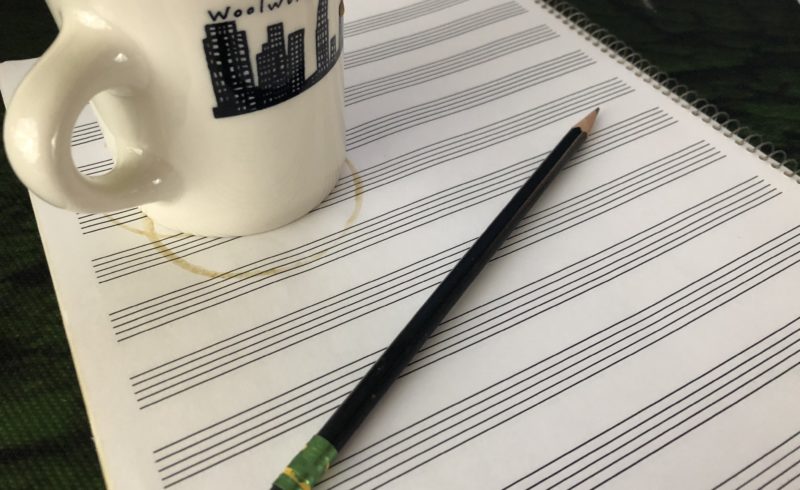
When and where is the trial?
Lower Manhattan (the familiar movie courthouse steps) on April 24th?
Who is the plaintiff suing Ed Sheeran for copyright infringement?
The plaintiff is NOT the family of Marvin Gaye. Although Gaye’s estate famously won its copyright infringement case against Blurred Lines songwriters Robin Thicke and Pharell Williams involving a different Marvin Gaye hit, Got To Give It Up, here Sheeran is being sued by Ed Townsend, who co-wrote Let’s Get It On with Marvin Gaye. There’s another suit in the works involving Structured Asset Sales, which owns some of the rights to Let’s Get It On. (And I suppose the Gaye estate could be coming for Sheeran eventually.)
In the “Blurred Lines” and “Stairway To Heaven” trials, we heard a lot about “deposit copies” and that the recording of the plaintiffs’ work, Taurus, wasn’t allowed to be heard in the courtroom. Is that going to happen here as well?
For music of a certain age, like “Got To Give It Up,” “Taurus” (the not-quite-the-same-as “Stairway” song), and “Let’s Get It On,” copyright law from over a hundred years ago prevails. And a hundred years ago, records weren’t considered “published.” It was a time of sheet music and player pianos. Although there as been a lot of back and forth on the matter, it appears that, again, as it was in the Blurred Lines and Stairway To Heaven trials, the protectable aspects of “Let’s Get It On,” are limited to what is represented on the sheet music deposit copy. The recording of Let’s Get It On with which we’re all familiar is not likely to be played for the jury. The plaintiffs will try to prove that “Thinking Out Loud” infringes upon the music shown on the sheet music to Let’s Get It On that was deposited to the Copyright Office.
There’s a video on youtube that shows Ed Sheeran in a live performance segueing from Thinking Out Loud to Let’s Get It On. Is that going to be shown in court?
It would appear so. The defense argued (my non-lawyer interpretation) that that video is evidence only of a fact already agreed upon — that Let’s Get It On can be sung to the chords and harmonic rhythm of Thinking Out Loud, which is true of lots of works. But do you think the jury could hear these two songs sung to the same chords and harmonic rhythm as Sheeran himself does here, and not conclude he therefore must have copied it? We may find out. The judge recently ruled that it was going to be allowed.
No surprise the plaintiffs want this video in, and the defendants want it out. The defense would like to call the Axis Of Awesome to the stand, please.
What has and has not been settled already?
This case has been in the works for a long time, and in that time, a lot of points have been argued, ruled upon, and are no longer significant. The melodies aren’t similar. The lyrics aren’t similar. And even the elements that are similar aren’t very original. But a couple of thorny issues remain, and they’re about the accompaniments to both works — roughly that the chords are very similar, but not very original. And the rhythm in which the chords are played is also the same, though also not very original. And so the main question, it appears, will be, taken together, is the combination of those two elements original enough and substantial enough to make a case for infringement?
That’s “selection and arrangement,” right? I keep hearing that phrase. What does it mean?
Now would be a good time to say again that while being a forensic musicologist entails familiarity with copyright law, I am not a lawyer, so this is a layperson’s explanation.
Even though the individual elements are themselves, taken individually, perhaps not protectable by one’s copyright, a sufficiently original selection and arrangement of elements can be. For example, on the one hand, a phone book is a selection and arrangement of names, numbers, and addresses, but since the arrangement is unoriginal and mechanical, it’s generally not sufficiently creative and doesn’t qualify. But a list of the “Top 25 Movies Of All Time” by the Washington Post might well be. The movie titles, like phonebook entries, are not themselves protected, but the creative choices of the movies and rankings could be.
But while it would be conspicuous if another publication were to come up with the same list of movies in the same order, here we have just two. Is there a minimum number of such elements that could amount to infringement?
I expect this case will lead to some clarification around this, but speaking as a forensic musicologist, I don’t think so much in terms of number as in terms of quantity and quality. I don’t like the idea of how many notes or how many seconds, for example, and I will not be comfortable if they came back with “two elements are too few.” There is a practicality in reducing these things to a quantifiable “absurdity threshold.” It might even be a net positive and so I try to appreciate the appeal of setting parameters around these things, but there would be a cost. Numbers are coarse. Creativity is not something you “count.” Creativity is something you measure, and preferably thoughtfully.